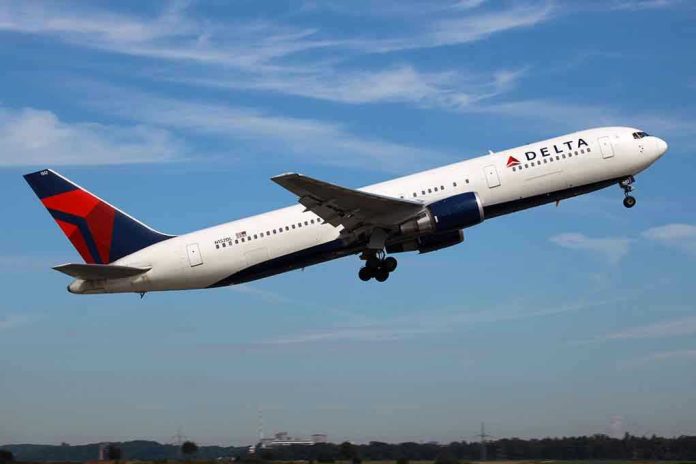
A US passenger jet narrowly avoided disaster when a Delta pilot made an “aggressive maneuver” to steer clear of a B-52 bomber. How did this heart-stopping encounter unfold?
At a Glance
- A Delta pilot had to perform an urgent maneuver to avoid a mid-air collision with a B-52 bomber.
- The incident highlights potential safety risks amid increased military activity.
- US military presence in Asia is intensifying, raising concerns about airspace safety.
- Close calls in the sky underscore the need for improved communication and coordination.
The Close Call in the Sky
In a scenario that sounds like it’s straight out of a high-stakes thriller, a Delta pilot recently found themselves in a precarious situation. While navigating the skies, the pilot had to make a split-second decision to avoid a collision with a massive B-52 bomber. This incident occurred amid heightened military activity, as the US continues to reinforce its presence in the Asia-Pacific region, particularly around the Korean Peninsula.
As these military exercises increase, so do the risks of such close calls. The skies are growing crowded with both civilian and military aircraft, and this latest episode serves as a stark reminder of the potential dangers lurking above. The B-52, a long-standing symbol of US military might since the 1950s, is part of ongoing demonstrations of power in response to North Korean threats.
Military Activity and Airspace Safety
The near-miss raises questions about the safety protocols in place to manage the intricate dance between civilian and military aircraft. While the US Air Force’s deployment of strategic assets like the B-52 is meant to reassure allies and deter adversaries, it inadvertently creates scenarios ripe for mid-air mishaps.
With tensions simmering on the Korean Peninsula, evidenced by the recent B-52 landing in South Korea for the first time in decades, the skies are more congested than ever. The Delta incident highlights the urgent need for enhanced coordination between military and civilian aviation sectors to prevent future close calls.
The Broader Implications
This incident is more than just a headline—it’s a symptom of larger geopolitical dynamics at play. The US’s strategic posturing in Asia is part of a broader pattern of military readiness and alliance-building with South Korea and Japan. However, this increased military footprint also brings with it the risk of escalating tensions with regional powers like North Korea and China.
While US officials emphasize these displays of strength as defensive, critics argue they could provoke further militarization in the region. The delicate balance between deterrence and provocation is a tightrope walk that must be navigated with care to avoid unintended consequences.






